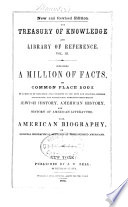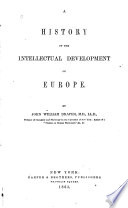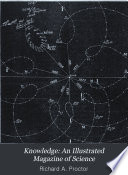 | 1850 - 772 pages
...upon it. 2d law. The alteration of motion is always proportional to the motive force impressed, and is made in the direction of the right line in which that force is impressed. 3d law. To every action there is and impediments) is either at rest, or moves uniformly in a right... | |
 | Carl Friedrich Peschel, Karl Friedrich Peschel - Physics - 1854 - 316 pages
...impressed thereon. 2nd. The change of motion is ever proportional to the motive force impressed, and is made in the direction of the right line in which that force is impressed. 3rd. To every action there is always opposed an equal reaction ; or the mutual actions of two bodies... | |
 | Samuel Maunder - 1855 - 766 pages
...upon it. 2d law. The alteration of motion is always proportional to ihe motive force impressed, and is made in the direction of the right line in which that force is impressed. 3d law. To every action there is »Iways opposed an equal re-action ; or the mutual actions of two... | |
 | John Ayrton Paris - Amusements - 1861 - 474 pages
...be rectilinear, ie, in the direction of a straight line. II. Change of motion it always proportional to the moving force impressed, and is always made in the direction of the right line in which the force acts. III. Action and Reaction are equal in equal quantitiet of matter, and act in contrary... | |
 | John William Draper - Europe - 1863 - 656 pages
...impressed thereon. (2.) The alteration of motion is ever proportional to the motive force impressed, and is made in the direction of the right line in which that force is impressed. (3.) To every action there is always opposed an equal reaction, or the mutual actions of two bodies... | |
 | Simon Newcomb, Edward Singleton Holden - Astronomy - 1880 - 542 pages
...us. Law Second : The alteration of motion ^s ever proportional to the moving force impressed, and is made in the direction of the right line in which that force acts. The first law might be considered as a particular case of this second one arising when the force... | |
 | Simon Newcomb, Edward Singleton Holden - Astronomy - 1881 - 544 pages
...us. Law Second : The alteration of motion ts ever proportional to the moving force impressed, and is made in the direction of the right line in which that force acts. The first law might be considered as a particular case of this second one arising when the force... | |
 | Science - 1884 - 536 pages
...established the law that the alteration of motion is proportionate to the motive force impressed, and is made in the direction of the right line in which that force is impressed; and NEWTON established the law that the mutual actions of two bodies upon each other are always equal... | |
 | Herbert Spencer - Philosophy - 1892 - 500 pages
...follows : — " The alteration of motion is ever proportional to the motive force impressed ; and is made in the direction of the right line in which that force is impressed. " If any force generates a motion, a double force will generate double the motion, a triple force triple... | |
 | George Minchin Minchin - Mechanics - 1900 - 278 pages
..." it stands thus : Change of motion is always proportional to the impressed force, and takes place in the direction of the right line in which that force is impressed. But these words require much amplification to make their meaning clear. Thus, the expression, "change... | |
| |